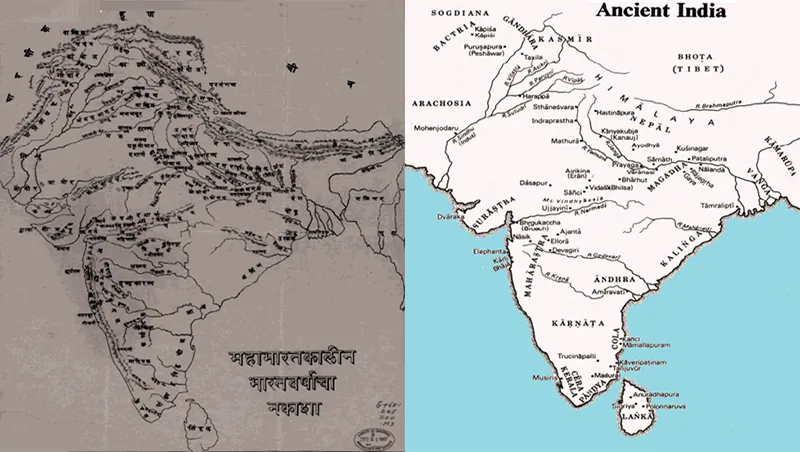Some ideas come with heavy political baggage. Others come with unacceptable authorship. “Akhand Bharat” seems doubly handicapped. It’s associated with the RSS and generates fears of Hindutva hegemony across the subcontinent.
But the essence of the idea — the unity of the subcontinent — is likely to endure. The problem is with different conceptions of that unity.
The disagreements are also about the nature of the relationships between different political entities of the region. There’s also much quibbling over names. The
BJPand RSS don’t like the word “India”, which they think is an invention of outsiders. Hence the insistence on “Bharat”.
On the flip side, many in Pakistan and elsewhere in the region accuse Jawaharlal Nehru of wrongfully appropriating the historic name of “India” when the subcontinent was partitioned.
New Delhi’s smaller neighbours complain that they have to cope with the tension between celebrating the shared “Indic civilisation” and the need to assert their separate identities vis-a-vis the largest territorial unit in the subcontinent that goes by the name of India.
The term of “Indian subcontinent”, unsurprisingly, is unacceptable, for it creates the same problem as “India”. The “subcontinent” (the preferred term for this column) draws fewer objections, but has strong competition from “South Asia”, which has gained much currency since the mid-1960s. Some want to put some passion into the integration project by fusing the two words into “Southasia”.
Whatever you may call the region, the idea of a “united subcontinent” refuses to go away. Days after Ram Madhav stepped on the “Akhand Bharat” landmine, two political leaders, Sharad Yadav and Ram Vilas Paswan, reminded the nation of the enduring idea of a “confederation” among India, Pakistan and Bangladesh.
Yadav and Paswan are the political legatees of the socialist leader Ram Manohar Lohia, who had opposed the partition of the subcontinent. “Confederation” is a far more subversive concept than the idea of cultural unity that Ram Madhav was espousing. Confederation, after all, involves some shedding of political sovereignty.
But the call for a confederation invokes fewer protests because of its presumed emphasis on voluntary and non-hegemonic association.
The concept of the “strategic unity” of the subcontinent is very much part of Nehruvian foreign policy. The idea that the security of the subcontinent was indivisible animated the first prime minister’s approach to neighbours — whether it was Nehru’s opposition to Pakistan’s Cold War alliances or the preservation of treaty-based special relationships with Nepal and Bhutan.
Sceptics would say the rhetoric about “Akhand Bharat”, or a “confederation” among India, Pakistan and Bangladesh, is just that. The subcontinent’s separate political identities have certainly congealed since the middle of the last century. The sovereignty of even the smallest of states in the region — Bhutan and Maldives — is now well-established.
Realists also point to the fact that smaller neighbours continue to mobilise outside powers to balance Delhi and India’s growing difficulties in preserving its much vaunted primacy in the region.
Would it be right, then, to conclude that the current state system in the subcontinent is cast in stone? Not so fast; there are many forces reshaping the subcontinent’s economic and political architecture.
One is regionalism. When Dhaka proposed the creation of a regional forum for South Asia in the late 1970s, both Delhi and Islamabad were wary. While India is now more supportive of regionalism under the banner of Saarc, Pakistan remains hesitant to embrace it, fearing as it does Delhi’s hegemony.
Three decades after the formation of the Saarc, there is much support for the idea of restoring the “historical unity of our common living space” as the journal Himal Southasian, founded in Kathmandu by Kanak Mani Dixit, affirms. Dixit and other regionalists lament the fact that the subcontinent is the least integrated region of the world. They are not, of course, seeking to undo the state system in the subcontinent but to promote greater cooperation through regional, sub-regional and transregional mechanisms.
The pressures to re-imagine the current order in the region are reinforced by the logic of globalisation. Beginning with Sri Lanka in the late 1970s, most countries in the region have shed inward oriented economic policies and are seeking to integrate with the global economy. But can you connect with the world while avoiding economic integration with your neighbours?
Meanwhile, the juggernaut of “red capitalism” in China is chipping away at the many barriers within the subcontinent and between it and the world. Through its many Silk Road initiatives — including the China-Pakistan Economic Corridor across the Karakoram and the Kunming-Kolkata corridor across the eastern Himalayas — Beijing is trying to physically reconnect the region that deliberately divided itself.
Economic factors are indeed driving the subcontinent towards greater unity.
But political reconciliation among warring groups within and across the region’s territorial boundaries remains hard as ever. The subcontinent’s story in the coming years could well be about irresistible economic forces meeting an immovable political object. The problem with “Akhand Bharat” is only one part of that story.
This article originally appeared in The Indian Express.
The views expressed above belong to the author(s). ORF research and analyses now available on Telegram! Click here to access our curated content — blogs, longforms and interviews.




 PREV
PREV

